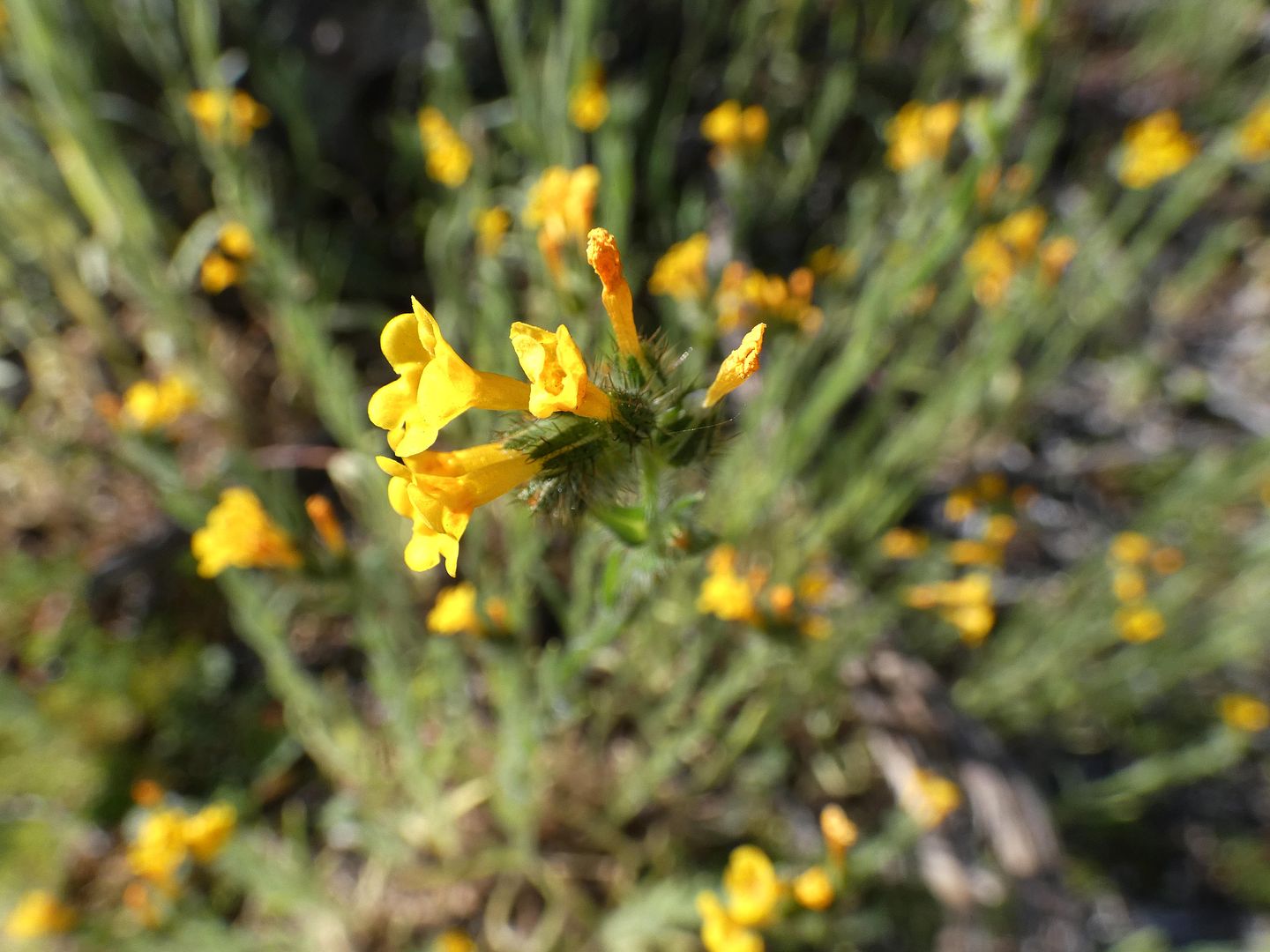
But so goes a life of adventure, when disasters turn into happy accidents—like stumbling across my first wildflower field of 2023, located on the road to the Hemet Maze Stone, where my morning took an unexpected turn.

They were fiddlenecks (Amsinckia intermedia), a common Southern California wildflower that's not so commonly found in such carpets as I discovered on California Avenue in Reinhardt Canyon.

The area around the Hemet Maze Stone is managed by the Western Riverside County Regional Conservation Authority, whose jurisdiction also includes such wildflower hotspots as Walker Canyon and Diamond Valley Lake (which I scouted out on this trip but is currently not blooming).

The Maze Stone is a local historic and cultural site in Hemet, a town probably known best for its annual Ramona pageant.

To get to it, I parked on the side of California Avenue once I reached the locked gate and walked the rest of the way up the paved (but closed) road, about 0.3 miles uphill.

I admired the snow-topped mountains in the distance and the greenest greenery I'd seen in a while, thanks to all the rain we've gotten this winter.

The bouldered landscape and rocky hills were impressive, too.

And then I started noticing more yellow wildflowers...

...and not just fiddlenecks (which are in the forget-me-not family), but also those in the daisy family.

The moon hadn't set yet, as it hung low in the blue sky, still shining a pale white.

Some of the rocks and stones appeared to be reaching up to take a swipe at it.

The California buckwheat (Eriogonum fasciculatum) was in its innocent pink flowering state (though it more commonly appears as a dry, brown cluster that incites pancake cravings).

Among the yellows and greens were also tiny purples...

...and whites (what I think was a species of popcornflower)...

...leading up to the fenced-off area of the Maze Stone.

And what I thought were my first poppies of the season (though yellow)...

...turned out to be (what I think are) sun cups.

The Hemet Maze Stone is unfortunately protected inside a double chainlink fence...

...which meant I could get much closer to (and more successfully photograph) the wildflowers that surrounded it rather than the stone itself.

But cultural resources like this one—believed to be an Indigenous petroglyph, and a California state landmark since 1956—have historically suffered from vandalism.

So the locks keep visitors with both good and bad intentions out.

The "maze" pattern has been interpreted by some to evoke the swastika—a symbol found in Navajo textiles and Hopi carvings but also strongly associated with the German Nazis (although there are differences in whether the symbol is running in a clockwise or counter-clockwise direction).

It was discovered in 1916 by a local rancher and the 500+ acres that it sits upon were donated by then-owners Mr. and Mrs. Rodger E. Miller in 1956 for the creation of a park.

Nobody knows how old it is—maybe 500 years, maybe 2000 years old. And nobody really knows where it came from, though it's officially attributed to Native Americans. The historical marker plaque calls the "maze" a pictograph, but it's actually a petroglyph—carved into the stone rather than painted on.
And of course some people think it was created by aliens.
In a 1991 article, the Los Angeles Times called it an "enigma" and described how it's just one of several maze stones that have been discovered in the immediate area and beyond.
Regardless, it made for a nice morning walk on a day that didn't exactly start as planned.

No comments:
Post a Comment